
Ascidia is a genus of tunicates in the family Ascidiidae.

Pyura is a large genus of sessile ascidians that live in coastal waters at depths of up to 80 m (260 feet). Like all ascidians, Pyura are filter feeders. A few species, including Pyura chilensis are commercially fished.

Microcosmus is a genus of tunicates in the family Pyuridae, containing the following species:
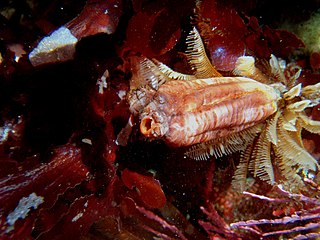
Styela is a genus of tunicates. Styela clava, an edible species, is known as an invasive species in some areas.
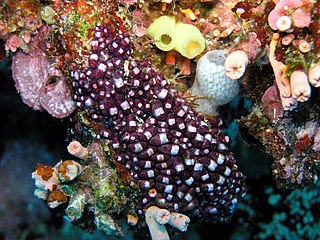
Eusynstyela is a genus of ascidian tunicates in the family Styelidae.

Phlebobranchia is an order of sea squirts in the class Ascidiacea, first described by Fernando Lahille in 1886.

Halocynthia is a genus of ascidian tunicates in the family Pyuridae. Species such as H. roretzi are eaten in parts of Asia as a delicacy.

Stolidobranchia is an order of tunicates in the class Ascidiacea. The group includes both colonial and solitary animals. They are distinguished from other tunicates by the presence of folded pharyngeal baskets. This provides the etymology of their name: in ancient Greek, στολίς, ίδος means the "fold" of a cloth. Stolidobranchian sea squirts are also characterized by the complete absence of an abdomen. The abdominal organs of other tunicates are instead located to one side of the pharyngeal basket in this group.
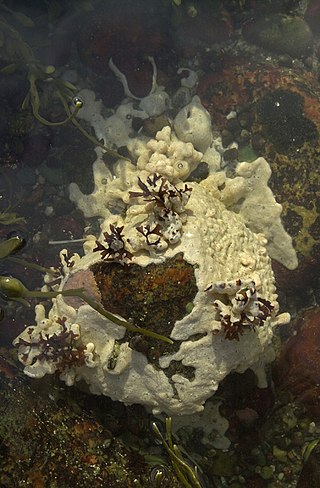
Aplousobranchia is an order of sea squirts in the class Ascidiacea, first described by Fernando Lahille in 1886. They are colonial animals, and are distinguished from other sea squirts by the presence of relatively simple pharyngeal baskets. This provides the etymology of their name: in ancient greek, ἁ.πλοος-ους (ha.ploos-ous) means "simple". The posterior part of the abdomen contains the heart and gonads, and is typically larger than in other sea squirts.
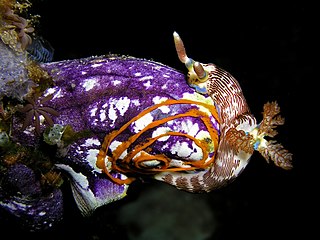
Polycarpa is a genus of ascidian tunicates in the family Styelidae.

Styelidae is a family of ascidian tunicates.
Eugyra are marine tunicates.
Paramolgula is a genus of marine tunicates.
Alloeocarpa is a genus of ascidian tunicates in the family Styelidae.
Bathystyeloides is a genus of ascidian tunicates in the family Styelidae.
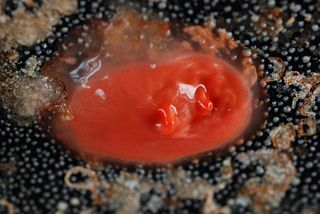
Cnemidocarpa is a genus of ascidian tunicates in the family Styelidae.
Gynandrocarpa is a genus of ascidian tunicates in the family Styelidae.

Symplegma is a genus of ascidian tunicates in the family Styelidae.
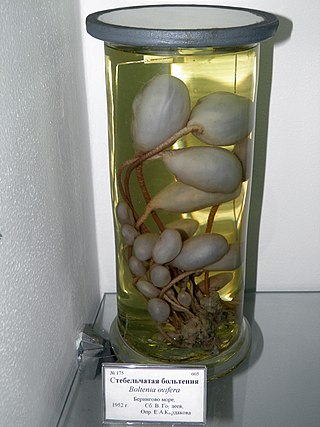
Boltenia is a genus of ascidian tunicates in the family Pyuridae.
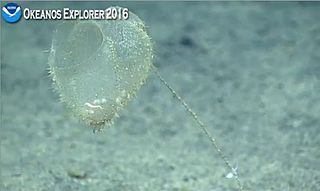
Culeolus is a genus of ascidian tunicates in the family Pyuridae.












